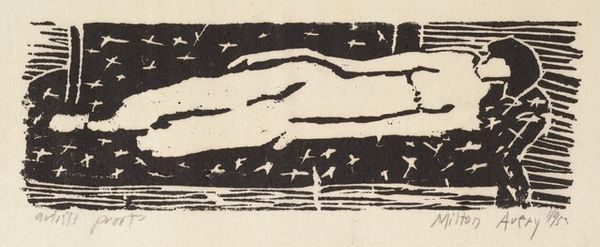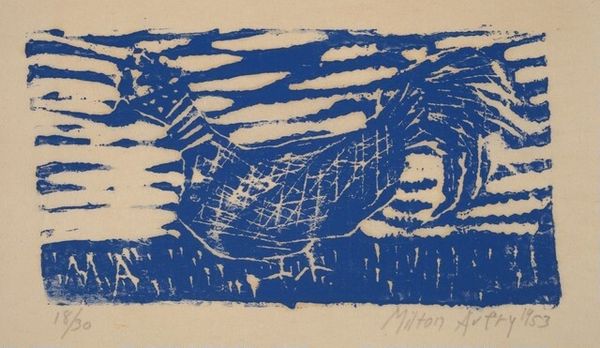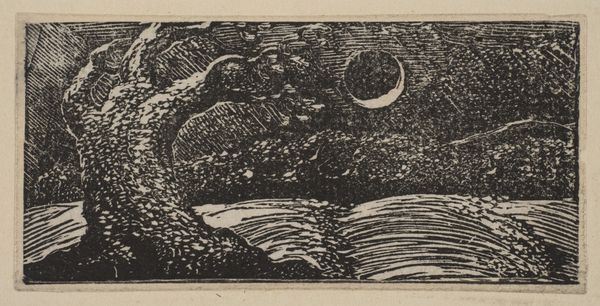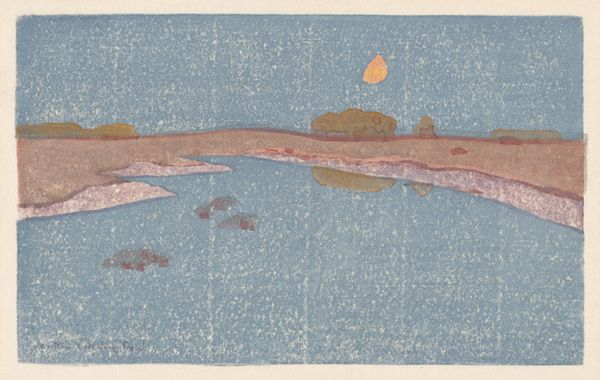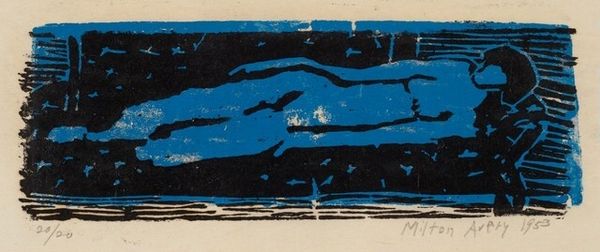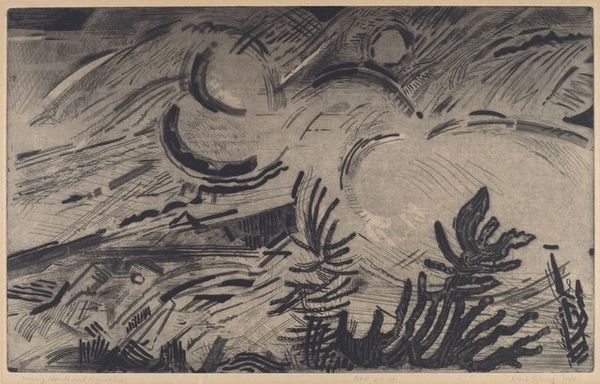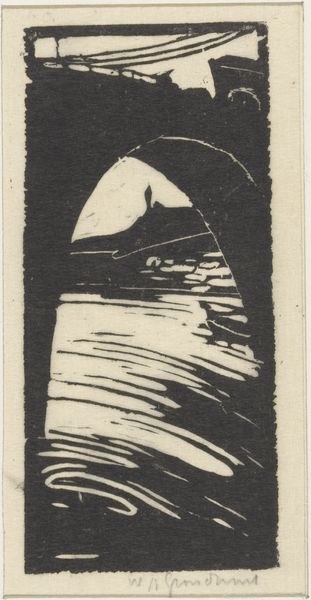
Dimensions: image: 24.6 x 61 cm (9 11/16 x 24 in.) sheet: 30.6 x 68 cm (12 1/16 x 26 3/4 in.)
Copyright: National Gallery of Art: CC0 1.0
Curator: Before us we have Milton Avery’s "Birds and Sea," created in 1955. It’s a striking woodcut, relying on the stark contrast of a deep blue against the off-white of the paper. What are your initial thoughts? Editor: I find myself drawn to the stark simplicity. The composition almost vibrates with that high contrast—the white birds against the dark sea, little floating sigils in this liquid dreamscape. Curator: Let's talk more about process. Avery opted for a woodcut. We can imagine the physical labor involved, carving away at the block of wood to define these forms. This subtractive method impacts how we perceive the negative space, imbuing it with significance. Editor: Absolutely. And beyond labor, think about the inherent qualities of the imagery he selects, Birds as messengers across cultures; water as life and constant change, Avery uses a limited vocabulary to trigger these vast associations, tapping into shared understandings. The sea almost becomes a mirror reflecting our own depths. Curator: I agree. There’s a tension there, too. Avery was clearly influenced by modernism, yet here, in his choice of material and process, he seems almost to be referencing the traditions of artisanal printmaking, and how he would engage in practices like carving during the summers spent with his wife Sally, out of financial constraint and by material availability. Editor: Yes! The sea becomes this space between places. The white birds contrast to the deep blue. These minimalist depictions echo across mythologies—think of the albatross as a symbol of burden, or simply birds representing freedom. Avery doesn’t need realism; he understands the cultural resonance embedded within the image. Curator: Avery has taken the mundane, birds and water, and given it this intense, abstract expression. There are few artists who are both so avant-garde and classical at the same time. It seems that this print could easily appear in an upcoming exhibition in this region about fishing and labour in coastal towns. Editor: Exactly. The choice to render this vista through something so visceral, creates an enduring, symbolic resonance that speaks across generations and cultures. Curator: Precisely! A testament to how an image, expertly crafted, becomes more than the sum of its parts and process. Editor: Agreed. It makes one reflect upon how symbols evolve and maintain meaning across time.
Comments
No comments
Be the first to comment and join the conversation on the ultimate creative platform.
